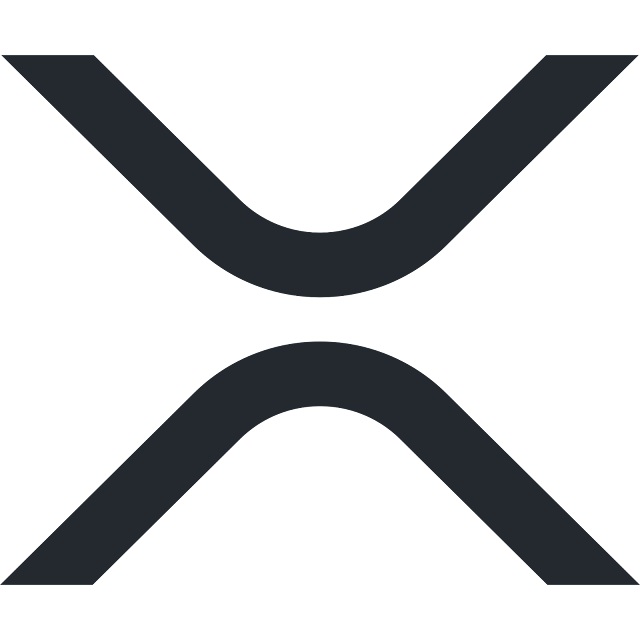Understanding XRP (XRP): A Digital Asset Built for Global Payments
XRP, also known as XRP, is a digital asset created by Ripple Labs Inc. It is designed to be a global payment system, offering fast and low-cost money transfers. In this article, we will delve into the features, working mechanism, and potential of XRP.
Introduction to XRP
XRP is the native cryptocurrency of Ripple, a cryptocurrency payment system created by Ripple Labs Inc. It aims to provide an alternative to traditional banking systems for global money transfers. XRP is specifically designed to enable users to send money at a significantly lower cost, attracting potential retail customers and financial institutions.
Founded in 2012 by Chris Larsen and Jed McCaleb, Ripple is based on the XRP Ledger, a decentralized open-source cryptographic ledger supported by a network of peer-to-peer nodes. McCaleb later left Ripple and founded Stellar, another payment-oriented cryptocurrency.
Initially known as OpenCoin, Ripple rebranded itself and pursued high-level partnerships with major financial institutions such as Bank of America, Santander, and Standard Chartered. However, Ripple faced legal troubles with US regulatory authorities for non-compliance with the Bank Secrecy Act and was later labeled as an unregistered security. This lawsuit remains unresolved as of early 2022. Furthermore, the company has been accused of misleading advertising during its early years.
How Does XRP Work?
Ripple proposes a cheaper and more efficient alternative to the Society for Worldwide Interbank Financial Telecommunications (SWIFT) system for processing international transactions. This is intended to be achieved through the Internet of Value, a collective term for several Ripple products: RippleNet, XRP Ledger, XRP coins, and RippleX.
RippleNet is its global network that financial institutions can use to transfer money faster and at lower costs than traditional systems. This is made possible through a single API connection to RippleNet. RippleNet also offers On-Demand Liquidity (ODL), eliminating the need for pre-funding in cross-border transactions. It essentially acts as an intermediary between two transacting parties and facilitates liquidity between different fiat currencies. For example, a European retailer may not want to accept US dollars and vice versa. ODL comes in and utilizes XRP as a bridge to facilitate the transaction.
XRP Ledger is the open-source blockchain maintained independently of Ripple, although Ripple uses it for various purposes. While not as popular as other blockchains, the XRP Ledger can also be used as a settlement layer.
Unlike Ethereum, XRP Ledger does not use the Proof-of-Work consensus mechanism. It also does not operate with Proof-of-Stake consensus mechanisms like many of its competitors. Instead, it utilizes the XRP Ledger Consensus Protocol, which is a more centralized and efficient solution to reduce transaction finality time and transaction costs. With XRP Ledger, transactions can be settled in a matter of seconds, much faster than the ten-minute block time of Bitcoin or traditional systems like SWIFT.
Finally, RippleX is a platform that offers blockchain solutions for projects looking to provide payment-oriented services. Instead of building their own DApps and blockchain solutions from scratch, companies can leverage RippleX's expertise and products, including the XRP Ledger, to provide mainstream compatibility and an appealing user experience. So far, two protocols have been launched under RippleX: Interledger, a payment protocol that provides compatibility between different payment systems, and PayString, a solution that simplifies payment addresses.
Potential and Challenges
XRP has gained attention and partnerships from various financial institutions and payment providers due to its potential to revolutionize cross-border transactions. Its fast transaction settlement time, low fees, and ability to bridge different fiat currencies make it an attractive option for international money transfers.
However, Ripple and XRP have faced their share of challenges. One of the major hurdles has been the ongoing legal battle with the U.S. Securities and Exchange Commission (SEC). The SEC alleges that Ripple conducted an unregistered securities offering by selling XRP, which Ripple contests. The outcome of this lawsuit could have significant implications for the future of XRP and its classification as a digital asset.
Moreover, the centralized nature of Ripple and its control over a significant portion of XRP supply has raised concerns among decentralization advocates within the cryptocurrency community. Some argue that Ripple's control over the network contradicts the principles of decentralization and censorship resistance that cryptocurrencies aim to achieve.
Furthermore, competition in the global payments sector is intense, with established players like SWIFT, as well as emerging blockchain-based solutions, vying for dominance. While Ripple has made progress in partnering with financial institutions, widespread adoption and acceptance of XRP as a mainstream payment solution still face challenges.
